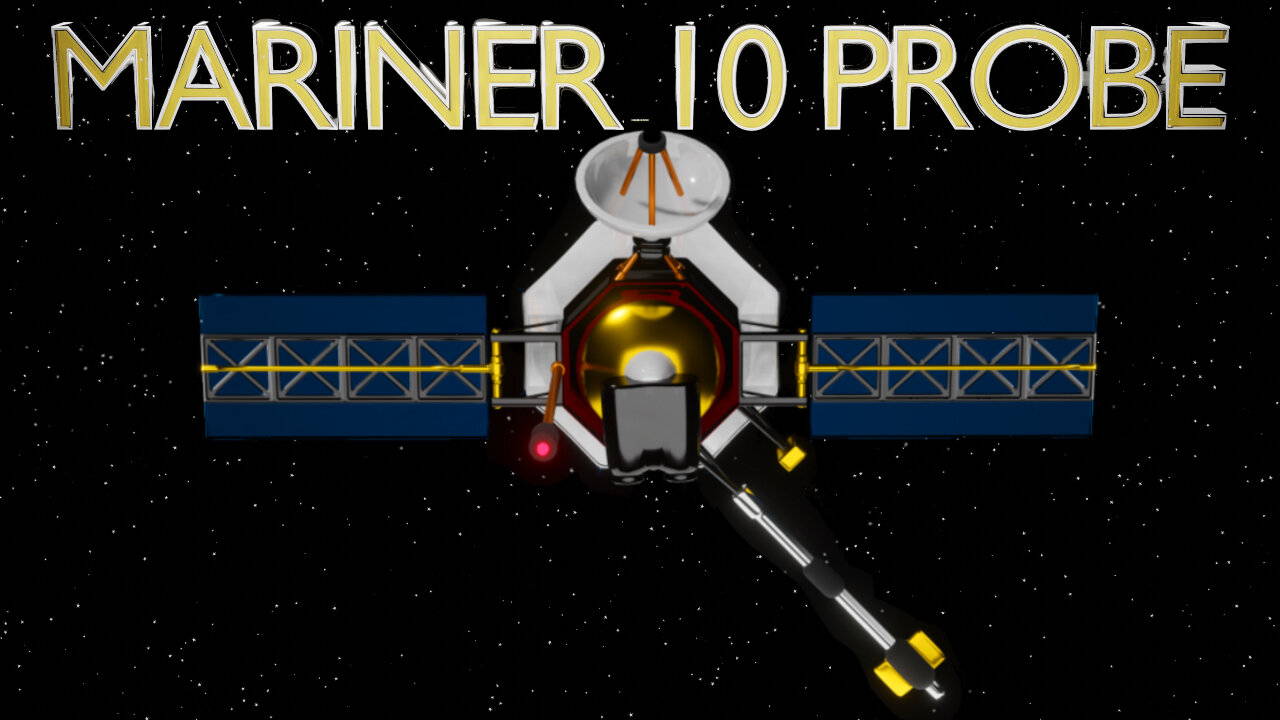Premium Only Content

Mercury's Mariner 10 Probe
Mariner 10 was an American robotic space probe launched by NASA on 3 November 1973, to fly by the planets Mercury and Venus. It was the first spacecraft to perform flybys of multiple planets.
Mariner 10 was launched approximately two years after Mariner 9 and was the last spacecraft in the Mariner program. (Mariner 11 and Mariner 12 were allocated to the Voyager program and redesignated Voyager 1 and Voyager 2.) The mission objectives were to measure Mercury's environment, atmosphere, surface, and body characteristics and to make similar investigations of Venus. Secondary objectives were to perform experiments in the interplanetary medium and to obtain experience with a dual-planet gravity assist mission. Mariner 10's science team was led by Bruce C. Murray at the Jet Propulsion Laboratory.
Design and trajectory:
An artists' impression of the Mariner 10 mission. The first mission to perform an interplanetary gravity assist, it used a flyby of the planet Venus in order to decrease its perihelion. This would allow the spacecraft to meet Mercury on three occasions in 1974 and 1975.
Mariner 10 was the first spacecraft to make use of an interplanetary gravitational slingshot maneuver, using Venus to bend its flight path and bring its perihelion down to the level of Mercury's orbit. This maneuver, inspired by the orbital mechanics calculations of the Italian scientist Giuseppe Colombo, put the spacecraft into an orbit that repeatedly brought it back to Mercury. Mariner 10 used the solar radiation pressure on its solar panels and its high-gain antenna as a means of attitude control during flight, the first spacecraft to use active solar pressure control.
The components on Mariner 10 can be categorized into four groups based on their common function. The solar panels, power subsystem, attitude control subsystem, and the computer kept the spacecraft operating properly during the flight. The navigational system, including the hydrazine rocket, would keep Mariner 10 on track to Venus and Mercury. Several scientific instruments would collect data at the two planets. Finally, the antennas would transmit this data to the Deep Space Network back on Earth, as well as receive commands from Mission Control. Mariner 10's various components and scientific instruments were attached to a central hub, which was roughly the shape of an octagonal prism. The hub stored the spacecraft's internal electronics. The Mariner 10 spacecraft was manufactured by Boeing. NASA set a strict limit of US$98 million for Mariner 10's total cost, which marked the first time the agency subjected a mission to an inflexible budget constraint. No overruns would be tolerated, so mission planners carefully considered cost efficiency when designing the spacecraft's instruments. Cost control was primarily accomplished by executing contract work closer to the launch date than was recommended by normal mission schedules, as reducing the length of available work time increased cost efficiency. Despite the rushed schedule, very few deadlines were missed. The mission ended up about US$1 million under budget.
Attitude control is needed to keep a spacecraft's instruments and antennas aimed in the correct direction. During course correction maneuvers, the spacecraft may need to rotate so that its rocket engine faces the proper direction before being fired. Mariner 10 determined its attitude using two optical sensors, one pointed at the Sun, and the other at a bright star, usually Canopus; additionally, the probe's three gyroscopes provided a second option for calculating the attitude. Nitrogen gas thrusters were used to adjust Mariner 10's orientation along three axes. The spacecraft's electronics were intricate and complex: it contained over 32,000 pieces of circuitry, of which resistors, capacitors, diodes, microcircuits, and transistors were the most common devices. Commands for the instruments could be stored on Mariner 10's computer, but were limited to 512 words. The rest had to be broadcast by the Mission Sequence Working Group from Earth. Supplying the spacecraft components with power required modifying the electrical output of the solar panels. The power subsystem used two redundant sets of circuitry, each containing a booster regulator and an inverter, to convert the panels' DC output to AC and alter the voltage to the necessary level. The subsystem could store up to 20 ampere hours of electricity on a 39-volt nickel–cadmium battery.
Created in Blender 3.4.1 on April 7th, 2023.
Thanks to Free3D.com for a gray colorless version of the Mariner 10 3D model. I added in the color and shading.
Music: Hades Decent by Unknown Artist.
If you enjoyed this video, please smash that like button, & leave a comment or a question. You can always subscribe to my channel as well. Thanks for stopping by!
-
 LIVE
LIVE
Game On!
17 hours agoCollege Football Is BACK! Week 1 Preview!
11,122 watching -
 16:58
16:58
marcushouse
12 hours ago $1.62 earnedSpaceX Starship Flight 10: What Really Happened! 🚀
25.8K11 -
 3:47
3:47
Blackstone Griddles
12 hours agoCampground Meal Planning on the Blackstone Camping Griddle
2.55K1 -
 28:13
28:13
Her Patriot Voice
12 hours ago $0.63 earnedIs Flag Burning Free Speech?
3.86K9 -
 17:51
17:51
TheRoyaltyAutoService
15 hours ago $0.17 earnedIs Flat Rate Ruining The Auto Repair Industry?!
2.36K4 -
 LIVE
LIVE
BEK TV
22 hours agoTrent Loos in the Morning - 8/28/2025
235 watching -
 LIVE
LIVE
The Bubba Army
21 hours agoMinneapolis Shooter Story Unfolds! - Bubba the Love Sponge® Show | 8/28/25
3,435 watching -
 26:00
26:00
DeVory Darkins
1 day ago $11.62 earnedDemocrat Mayor HUMILIATES himself during painful interview as Trump makes SHOCKING Announcement
35.4K90 -
 22:14
22:14
Ohio State Football and Recruiting at Buckeye Huddle
1 day agoOhio State Football: Everything Steve Sarkisian Said About the Buckeyes This Week
19K -
 1:19:55
1:19:55
TruthStream with Joe and Scott
1 day agoLisa, Michelle and Carole join Joe for Healing and Inspiration. Next healing will be on Aug 28th at Noon and 4pm eastern https://www.balancingbodyandsoul.com/?ref=TRUTHSTREAMSHOW
12.1K1